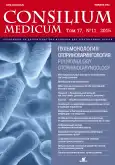Односторонняя глухота: пути решения
- Авторы: Левина Е.А.1, Левин С.В.1, Кузовков В.Е.1, Астащенко С.В.1, Сугарова С.Б.1
-
Учреждения:
- ФГБУ Санкт-Петербургский НИИ уха, горла, носа и речи Минздрава России
- Выпуск: Том 17, № 11 (2015)
- Страницы: 99-102
- Раздел: Статьи
- URL: https://journals.rcsi.science/2075-1753/article/view/94489
- ID: 94489
Цитировать
Полный текст
Аннотация
Ключевые слова
Полный текст
Открыть статью на сайте журналаОб авторах
Елена Алексеевна Левина
ФГБУ Санкт-Петербургский НИИ уха, горла, носа и речи Минздрава России
Email: xramovaL@gmail.com
канд. мед. наук, науч. сотр. отд. диагностики и реабилитации нарушений слуха ФГБУ СПб НИИ уха, горла, носа и речи 190013, Россия, Санкт-Петербург, ул. Бронницкая, д. 9
Сергей Владимирович Левин
ФГБУ Санкт-Петербургский НИИ уха, горла, носа и речи Минздрава Россииканд. мед. наук, ст. науч. сотр. отд. диагностики и реабилитации нарушений слуха ФГБУ СПб НИИ уха, горла, носа и речи 190013, Россия, Санкт-Петербург, ул. Бронницкая, д. 9
Владислав Евгеньевич Кузовков
ФГБУ Санкт-Петербургский НИИ уха, горла, носа и речи Минздрава Россиид-р мед. наук, зав. отд. диагностики и реабилитации нарушений слуха ФГБУ СПб НИИ уха, горла, носа и речи 190013, Россия, Санкт-Петербург, ул. Бронницкая, д. 9
Светлана Витальевна Астащенко
ФГБУ Санкт-Петербургский НИИ уха, горла, носа и речи Минздрава Россиид-р мед. наук, зав. отд-нием реконструктивной хирургии уха ФГБУ СПб НИИ уха, горла, носа и речи 190013, Россия, Санкт-Петербург, ул. Бронницкая, д. 9
Серафима Борисовна Сугарова
ФГБУ Санкт-Петербургский НИИ уха, горла, носа и речи Минздрава Россииканд. мед. наук, науч. сотр. отд. диагностики и реабилитации нарушений слуха ФГБУ СПб НИИ уха, горла, носа и речи 190013, Россия, Санкт-Петербург, ул. Бронницкая, д. 9
Список литературы
- Shargorodsky J, Curhan S.G, Curhan G.C, Eavey R. Change in prevalence of hearing loss in US adolescents. JAMA 2010; 304 (7): 772-8.
- Альтман Я.А., Таварткиладзе Г.А. Руководство по аудиологии М.: ДМК Пресс, 2003.
- Левина Е.А. Сенсоневральная тугоухость - общие принципы медикаментозного подхода. Consilium Medicum 2013; 15 (11): 64-7.
- Кузовков В.Е., Янов Ю.К., Левин С.В. Аномалии развития внутреннего уха и кохлеарная имплантация. Рос. оторинолар. 2009; 2: 102-7.
- Kamal S.M, Robinson A.D, Diaz R.C. Cochlear implantation in single - sided deafness for enhancement of sound localization and speech perception. Curr Opin Otolaryngology Head Neck Surg 2012; 20 (5): 393-7.
- Dimmelow K.L, Fitzgerald O'Connor A, Johnson I.J, Mc Kinney C. Hear the other side - a report on Single Sided Deafness Entific. Medical Systems Newcastle, 2003.
- Mertens G, Kleine Punte A, De Ridder D, van de Heyning P. Tinnitus in a single - sided deaf ear reduces speech reception in the nontinnitus ear. Otol Neurotol 2013; 34 (4): 662-6.
- Алдошина И.А. Основы психоакустики. Звукорежиссер. 2000; 2 (10).
- Астащенко С.В., Аникин И.А., Кузовков В.Е., Карапетян Р.В. Реабилитация пациентов с хроническим гнойным средним отитом, перенесших радикальную операцию на среднем ухе, в современных условиях. Рос. оторинолар. 2011; 4: 22-7.
- Астащенко С.В., Сугарова С.Б., Левин С.В. Имплантируемый слуховой аппарат костной проводимости в реабилитации пациентов с тугоухостью высокой степени. Рос. оторинолар. 2014; 2: 6-10.
- Valente M, Fabry D.A, Potts L.G. Recognition of speech in noise with hearing aids using dual microphones J Am Acad Audiol 1995; 6 (6): 440-9.
- Christensen L, Richter G, Dornhoffer J.L. Update on bone - anchored hearing aids in pediatric patients with profound unilateral sensorineural hearing loss. Arch Otolaryngol Head Neck Surg 2010; 136 (2): 175-7.
- Сугарова С.Б. Оценка качества жизни у пациентов после установки имплантируемых слуховых систем. Рос. оторинолар. 2014; 1: 202-6.
- Сугарова С.Б., Диаб Х.М., Астащенко С.В. Анатомические особенности окна улитки применительно к вибропластике и кохлеарной имплантации. Рос. оторинолар. 2012; 5: 121-6.
- Arndt S, Aschendorff A, Laszig R et al. Comparison of pseudobinaural hearing to real binaural hearing rehabilitation after cochlear implantation in patients with unilateral deafness and tinnitus. Otol Neurotol 2011; 32 (1): 39-47.
- Arts R.J, George E.L, Stokroos J.R, Vermeire K. Cochlear implantation as a durable tinnitus treatment in single - sided deafness. Head Neck Surg 2012; 20 (5): 398-403.
- Hochmair-Desoyer I, Schulz E, Moser L, Schmidt M. The HSM sentence test as a tool for evaluating the speech understanding in noise of cochlear implant users. Am J Otol 1997; 18 (6): 83.
- Jacob R, Mueller J.J. Preliminary speech recognition results after cochlear implantation in patients with unilateral hearing loss: a case series. J Med Case Report 2011; 5: 343.
Дополнительные файлы






